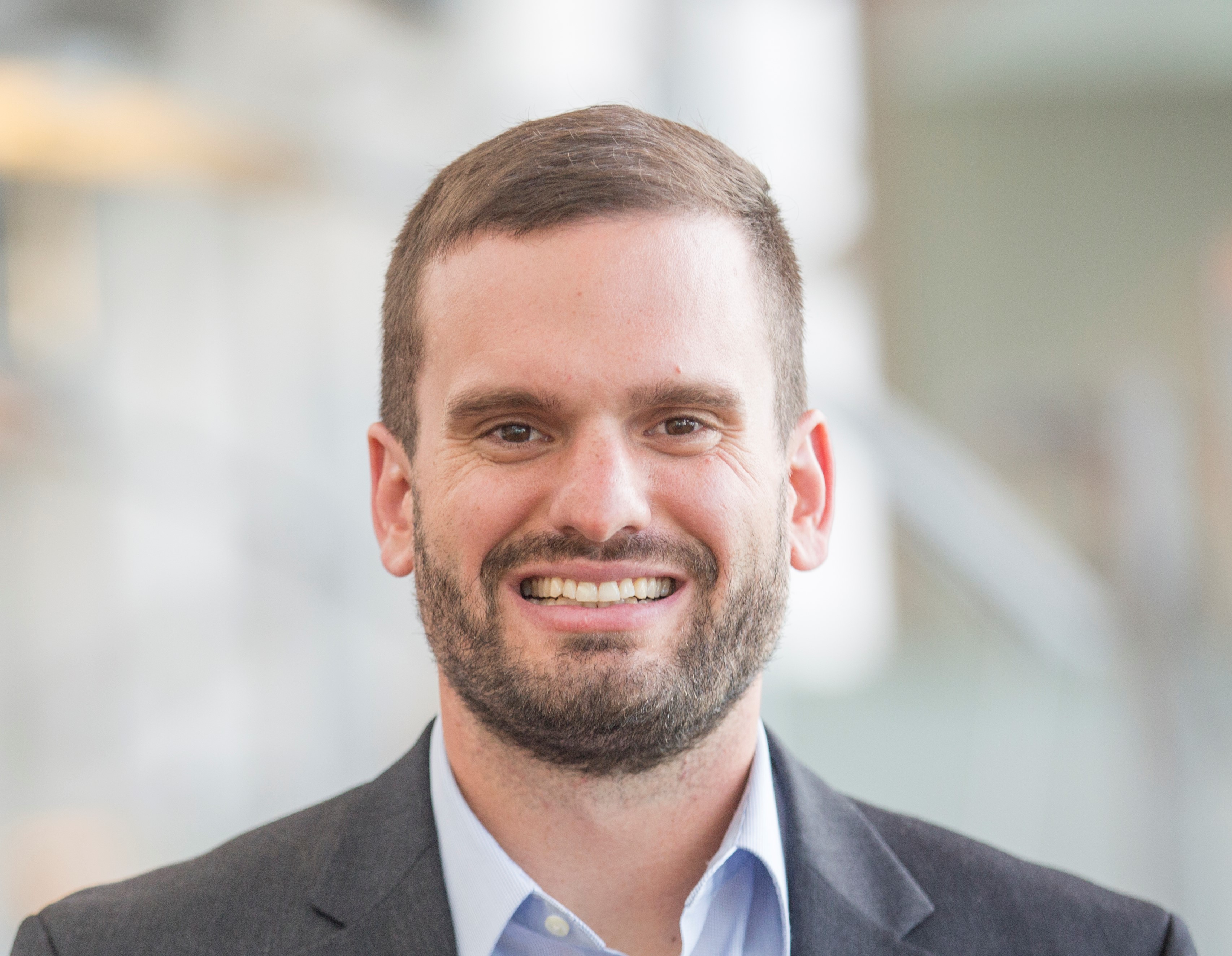EPA Region 2 Forty Years to the Finish - A Case Study of Combe Fill South Landfill Superfund Site
Sponsored by: Society of American Military Engineers (SAME) Denver Post, SAME Philadelphia Post, and US EPA
Archived: Wednesday, January 13, 2021
EPA Region 2 Forty Years to the Finish - A Case Study of Combe Fill South Landfill Superfund Site
2021-01-13
Society of American Military Engineers (SAME) Denver Post, SAME Philadelphia Post, and US EPA
The Society of American Military Engineers (SAME) Denver Post and Philadelphia Post along with the US Environmental Protection Agency (EPA) are hosting a series of webinars based on talks given at recent Design and Construction Issues at Hazardous Waste Sites (DCHWS) Symposiums. The mission of the DCHWS symposiums is to facilitate an interactive engagement between professionals from government and the private sector related to relevant and topical issues affecting applications of engineering and science associated with cleaning up hazardous waste sites. The symposiums also serve as a platform to facilitate the exchange of information, encourage dialogue, share experiences, and build and enhance communication among design and construction professionals. This presentation is a case study of Combe Fill South Landfill Superfund Site listed on the NPL in 1983 with a record of decision (ROD) in 1986, explanation of significant differences (ESD) in 2000 and amended ROD in 2018. HDR and its predecessor company LMS have been working on this site since its NPL listing in 1983. The presentation will highlight:
- How advancements in high resolution analytical and geophysical methods over this time period had a bearing on the original conceptual site model (CSM), and how the application of evolving technologies resulted in investigative and design improvements to achieve the site's remedial action objectives (RAOs).
- How the appearance of emerging contaminants - namely 1,4-dioxane - took the remediation timeline through a detour and how delineation and ultimate treatment of emerging contaminants, including PFCs, became the most significant component of this site's history.
- The data and decision-making process resulting from numerous bench and pilot scale studies for 1,4-dioxane treatment, as well as various innovative and tried-and-true hydrogeologic evaluations in fractured rock.
- The use of new design technologies and software (e.g. LiDAR, Autodesk Recap, Autodesk Revit, BIM 360, etc.) to create a 3D model of the existing groundwater treatment facility, evaluate the potential reuse vs new design, and ultimately complete a new treatment facility design
Upcoming 2020 Design and Construction at Hazardous Waste Sites Virtual Symposium Panel Sessions
Design and Construction Issues at Hazardous Waste Sites (DCHWS) Series Archives
- Ten Years of Optimization of the Environmental Restoration program at a DoD Facility in North Carolina (Sep 15, 2021)
- Risk Management During the Cost Estimating Process (Jul 14, 2021)
- Increasing Treatment Certainty while Controlling Remediation Cost - Case Studies using Hydraulic Fracturing to Deliver Amendments at Low-Permeability Sites (Jul 14, 2021)
- Design and Construction Issues at Hazardous Waste Sites Webinar on Successful Remedial Design, Session 2 (May 12, 2021)
- Design and Construction Issues at Hazardous Waste Sites Webinar on Successful Remedial Design, Session 1 (May 12, 2021)
- An Environmental Cold Case Detective Story: Discovery and Repair of the Soil Cover on the Cell 3 Landfill (Apr 28, 2021)
- 2021 Design and Construction at Hazardous Waste Sites Virtual Symposium (Apr 1, 2021)
- 2021 Design and Construction at Hazardous Waste Sites Virtual Symposium (Mar 31, 2021)
- 2021 Design and Construction at Hazardous Waste Sites Virtual Symposium (Mar 29, 2021)
- EPA Region 2 Forty Years to the Finish - A Case Study of Combe Fill South Landfill Superfund Site (Jan 13, 2021)
- 2020 Design and Construction at Hazardous Waste Sites Virtual Symposium: Panel 5 and Panel 6 (Oct 28, 2020)
- 2020 Design and Construction at Hazardous Waste Sites Virtual Symposium: Panel 3 and Panel 4 (Oct 27, 2020)
- 2020 Design and Construction at Hazardous Waste Sites Virtual Symposium: Panel 1 and Panel 2 (Oct 26, 2020)
- Former BICC Cables Site Construction Hudson River Sediment Cap Under the EPRI Building Yonkers, Westchester County, New York (Jun 10, 2020)
- Integration of Resiliency and Sustainability into Remedy Evaluation, Design, and O&M: A Compilation of Case Study Findings (May 13, 2020)
- Heat Enhanced Hydrolysis of Energetic Compounds and Field Results (Apr 8, 2020)
- Reducing Cost Risk in Remedial Action Budgets Using Supplemental Analyses (Mar 11, 2020)
- Investigation, Design, Construction, and Optimization of a Large-Scale Combined In Situ Thermal Treatment and Enhanced Bioremediation Remedy (Feb 12, 2020)
- An Overview of the Fundamentals of Sequence Stratigraphy and its Application to Developing Robust Conceptual Site Models and Remedial Strategies (Jan 15, 2020)
- Construction Manager Perspective: Lessons Learned Implementing the Superfund Job Training Initiative (Super JTI) (Dec 11, 2019)
- Substrate Longevity and Long-Term Performance of Biochemical Reactors for Passive Treatment of Mine-Impacted Water (Nov 25, 2019)
- Harnessing Natural River Processes to Remediate 120 km of the Big River in Jefferson County, Missouri (Sep 25, 2019)
Accessibility, Recording, and Content Disclaimer
Rehabilitation Act Notice for Reasonable Accommodation
It is EPA's policy to make reasonable accommodation to persons with disabilities wishing to participate in the agency's programs and activities, pursuant to the Rehabilitation Act of 1973, 29 U.S.C. 791. Any request for accommodation should be made to Kate Garufi at 703-517-5857 or garufi.katherine@epa.gov, preferably one week or more in advance of the webinar, so that EPA will have sufficient time to process the request. EPA would welcome specific recommendations from requestors specifying the nature or type of accommodation needed. Please note that CLU-IN provides both alternate phone call-in options and closed captioning for all webinars, and requests for these specific accommodations are not necessary.
Webinar Recording
By participating in this CLU-IN webinar, you automatically agree to authorize recording of audio and visual content presented during this live event and consent to subsequent use of this recording in the public domain by the U.S. Environmental Protection Agency. This recording may include questions, comments and poll responses provided by you during the live event in addition to your name, voice, image or likeness. This recording will be made available after the conclusion of the live event as part of the CLU-IN webinar archives, and will remain available indefinitely. If you do not wish to consent to the recording, please do not join the live event, and contact Jean Balent at 202-566-0832 or balent.jean@epa.gov to discuss your concerns.
Content Disclaimer
This webinar is intended solely to provide information to the public. The views and opinions expressed as part of this webinar do not necessarily state or reflect those of the U.S. Environmental Protection Agency. It is not intended, nor can it be relied upon, to create any rights enforceable by any party in litigation with the United States, or to endorse the use of products or services provided by specific vendors. With respect to this webinar, neither the United States Government nor any of their employees, makes any warranty, express or implied, including the warranties of merchantability and fitness for a particular purpose, or assumes any legal liability or responsibility for the accuracy, completeness, or usefulness of any information, apparatus, product, or process disclosed, or represents that its use would not infringe privately owned rights.
Presenters:
 Patricia Parvis, LSRP, PG
Patricia Parvis, LSRP, PG
Patricia is a Vice President, Professional Associate and Senior Project Manager at HDR with over 26 years of experience, specializing in managing large Remedial Investigations/Feasibility Studies (RI/FS), Remedial Design (RD), Remedial Action (RA) and Operation and Maintenance (O&M) projects for federal and state Superfund programs in New Jersey and New York. She is well-versed in both New Jersey and New York site remediation regulatory programs and is also proficient in obtaining federal and state permits in support of remedial actions at sites with ecological resources. She collaborated on the design, and managed construction of an industry-first sediment cap having no permanent or temporary impacts to riparian resources. For the last 10 years, she has investigated sites and evaluated remedial technologies for emerging contaminants such as 1,4-dioxane. Patricia completed a successful pilot test for a proprietary technology to treat 1,4-dioxane at a fractured bedrock Superfund site. She has experience using forensic analyses, such as 3-D CSIA, to distinguish between chlorinated solvent sources in co-mingled groundwater contamination plumes. Her presentations focus on non-traditional investigation and remediation technologies such as "Application of Magnetometric Resistivity to Locate Preferential Flow Pathways in Fractured Rock," at the 2015 Design and Construction Issues at Hazardous Waste Sites Symposium, and "Preserving Environmentally-Sensitive Natural Resources during Remedial Actions" at the May 2018 USACE SAME Joint Engineer Training Conference.
 Andrew Wadden, LSRP
Andrew Wadden, LSRP
Andrew Wadden is a Licensed Site Remediation Professional and project manager at HDR with over 15 years experience in the environmental consulting industry. Andrew has a M.S. in environmental studies from the University of Massachusetts-Lowell and B.S. in chemistry from Fairfield University. He has been working on the Combe Fill South Landfill Superfund site since 2010 with the OU2 RI phase and continued involvement through the PDI and RD phases of work.
 Andrew Watson, P.E.
Andrew Watson, P.E.
Andrew Watson is a licensed Professional Engineer and Project Manager at HDR. He has over 12 years of experience in the environmental consulting industry supporting remedial investigations, remedial designs and implementations and remedial process optimization projects. Mr. Watson has a M.S. in Environmental Engineering from the New Jersey Institute of Technology and a B.S. in Environmental Systems Engineering from Penn State.
 Pamela Baxter, EPA Region 2
Pamela Baxter, EPA Region 2
Pamela J. Baxter, Ph.D., CHMM, is an environmental engineer who has worked for the U.S. Environmental Protection Agency, Region 2, Superfund Emergency Management Division for the past 30 years. Her experience has been working as a remedial project manager by managing various superfund hazardous waste sites located in New Jersey. She is a certified hazardous materials manager, a member of the Institute of Hazardous Material Management, and a Member of Alliance of Hazardous Materials Professionals. She also serves as an assistant safety officer for EPA's Emergency Response Corps.
She is also a co-leader of EPA's CCNY Alumni Group and helps organize informational sessions for students to consider a career at EPA.
Pamela earned her B.E.M.E degree in Mechanical Engineering from the City College of the City University of New York (CUNY), a M.S. degree in Environmental and Occupational Health Sciences from Hunter College of CUNY, a M.S. degree in Environmental Engineering from NJIT, M.S. degree Construction Management from Stevens Institute of Technology, and she received her Ph.D. degree in Civil Engineering from Stevens Institute of Technology. In addition to working for EPA, she is an adjunct assistant professor at the City College of the City University of New York.
Moderators:
 Jean Balent, U.S. EPA Technology Innovation and Field Services Division (balent.jean@epa.gov or 202-566-0832)
Jean Balent, U.S. EPA Technology Innovation and Field Services Division (balent.jean@epa.gov or 202-566-0832)
Ms Balent is on the staff of the EPA's Technology Innovation and Field Services Division where she has worked to collect and disseminate hazardous waste remediation and characterization information since 2003. Ms Balent manages the Clean Up Information Network website and actively supports online communication and collaboration resources available to EPA. She formerly worked with the US Army Corps of Engineers Environmental Engineering Division in the Buffalo District. Ms Balent was also a member of the SUNY-Buffalo Groundwater Research Group where she constructed and tested large scale models of groundwater flow. Ms Balent has also conducted research relating to the Great Lakes, environmental remediation, and brownfields re-development. She holds a Bachelor's degree in environmental engineering from SUNY-Buffalo and a Master's degree in Information Technology from AIU.
 Kate Garufi, EPA OSRTI (garufi.katherine@epa.gov or 703-517-5857)
Kate Garufi, EPA OSRTI (garufi.katherine@epa.gov or 703-517-5857)
Kate Garufi, a project management professional, is the Rocky Mountain region remediation lead for HDR based out of Denver, Colorado. In this role, Kate partnerswith federal clients, including the U.S. Environmental Protection Agency and U.S. Army Corps of Engineers, and industrial clients on complex remediation projects. Prior to joining HDR, Kate spent 16 years at the EPA Headquarters in the Office of SuperfundRemediation and Technology Innovation. At EPA, she was a Superfund program expert in Superfund site management, design and construction project delivery, and technical project scoping. She holds a master's degree in environmental engineering from John Hopkins University and a bachelor's degree in chemical engineering from Virginia Tech
Webinar Slides and References:
Webinar Slides and References:
Additional Resources:
If you have a suggested topic or idea for a future CLU-IN internet seminar, please contact:
Technology Integration and Information Branch
PH: 202-566-0832 | Email: balent.jean@epa.gov
Technology Integration and Information Branch
PH: 202-566-0875 | Email: adam.michael@epa.gov





